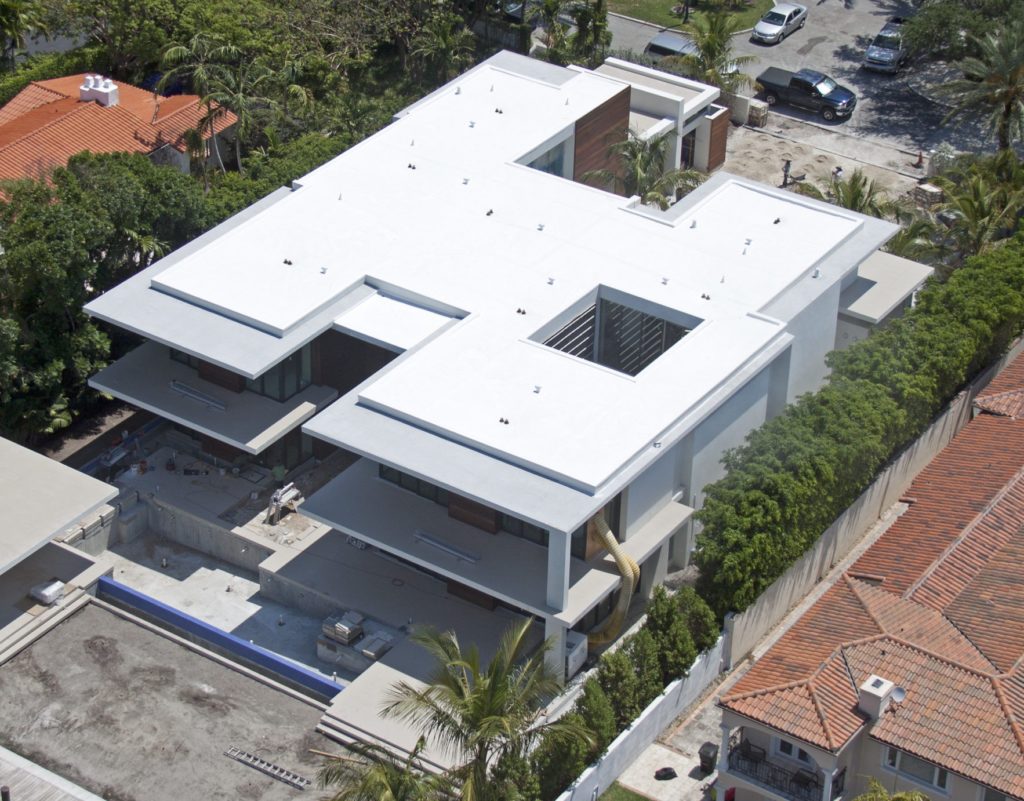Flat roofing membranes play a crucial role in protecting buildings from the elements, ensuring durability, and maintaining structural integrity. Among the popular options are TPO (Thermoplastic Polyolefin), EPDM (Ethylene Propylene Diene Monomer), and DeckSeal. While each membrane has its merits, understanding their differences is paramount for informed decision-making. However, a critical examination reveals why DeckSeal may not be the optimal choice.
TPO (Thermoplastic Polyolefin): The best option for flat roofing
TPO is a synthetic roofing material known for its durability, energy efficiency, and flexibility. GAF and Carlisle SynTec are well-regarded in the TPO roofing market. They offer membranes engineered to withstand diverse weather conditions while maintaining superior performance. GAF’s EverGuard® TPO and Carlisle’s Sure-Weld® TPO are known for their durability, ease of installation, and excellent seam strength. These brands provide warranties that underscore their commitment to quality and customer satisfaction.

EPDM (Ethylene Propylene Diene Monomer): A great secondary option for flat roofing.
EPDM is a synthetic rubber membrane prized for its durability and cost-effectiveness. Brands like Firestone Building Products and Carlisle SynTec dominate the EPDM roofing market with products renowned for their weather resistance, flexibility, and longevity. Firestone’s RubberGard™ EPDM and Carlisle’s Sure-Seal® EPDM offer superior protection against UV radiation, ozone exposure, and temperature extremes. These brands provide comprehensive warranties, assuring building owners of long-term performance and peace of mind.

DeckSeal: a compromise for flat roofing.
DeckSeal, while marketed as a viable option for flat roofing, falls short in comparison to TPO and EPDM. Brands such as DeckSeal may offer initial appeal due to lower costs, but they lack the durability and longevity of TPO and EPDM membranes. Their composition often includes bitumen and other additives that may degrade over time, leading to premature deterioration and susceptibility to leaks. Moreover, DeckSeal’s performance in extreme weather conditions, especially under prolonged UV exposure, is questionable, making it a less reliable option for long-term roofing solutions.
Deckseal is not a bad product. It fills a niche that only it can fill. However, unscrupulous contractors will often recommend it because it is affordable. Deckseal must be used on a roof with a slope. It is not rated for ponding water, and thus it is not appropriate to use on true flat roofs.

Conclusion:
In the realm of flat roofing membranes, TPO and EPDM emerge as superior choices due to their proven durability, weather resistance, and ease of installation. While DeckSeal may offer short-term cost savings, its inferior quality and susceptibility to deterioration undermine its long-term reliability. Invest in TPO or EPDM to ensure peace of mind. Your building is protected by robust, dependable roofing materials that stand the test of time. When considering flat roofing options, prioritize quality and longevity to safeguard your property against the elements for years to come.
Choosing SBS Exteriors for your flat roofing needs ensures unparalleled expertise, reliability, and customer satisfaction. With a proven track record in the industry, SBS Exteriors stands out for their commitment to excellence and attention to detail. Their team of skilled professionals possesses extensive experience in flat roofing installations, utilizing cutting-edge techniques and top-quality materials to deliver superior results. Trust SBS Exteriors to provide durable, long-lasting solutions tailored to your specific needs, safeguarding your property against the elements for years to come.
724.918.1000 http://SBS-Exteriors.com

2 responses to “Understanding Flat Roofing Membranes: TPO, EPDM, and Why DeckSeal Falls Short”
[…] Confused about TPO, EPDM, or Deckseal? […]
[…] Do I need EPDM, TPO, or Deckseal? […]